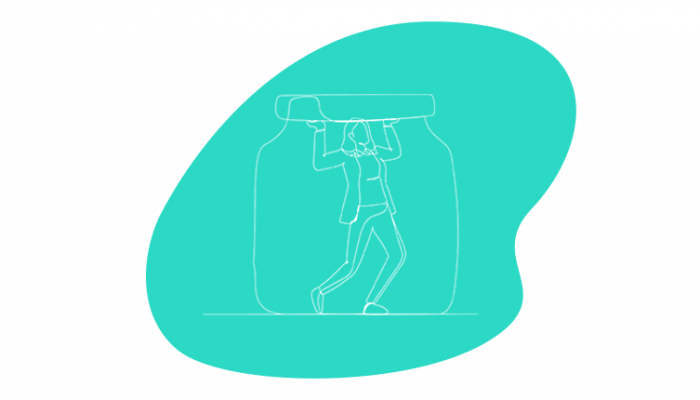Six evidence-backed ways to survive a PR crisis
When a crisis is emerging and time is scarce, staying silent can feel like the easy option — yet recent research by the Vuelio Insights team shows that shutting down communications altogether can do much more harm than good.
So, what are the most effective steps you can take to limit negative coverage around your brand? How do you measure the impact of the crisis on your brand and the wider industry?
In our recent webinar we explored how world-leading companies have successfully survived short, mid, and long-term crises, and the mistakes made by those who did not do so well.
While we analysed data across a diverse range of industries and contexts, those who performed best often adopted similar methodologies. Here are some of the most effective tactics that have positively served brands undergoing reputational risk in the press.
1. Proactive > Reactive
Being vocal, transparent, and accessible in a crisis is essential, and our insights research backs it up. It shows that brands who choose to stay silent demonstrate less control over negative coverage than those who speak up.
But timing is key, and waiting too long to reach out can have the same impact as not saying anything at all. Proactive strategies that communicate your key messages ahead of, or during, the initial stages of a crisis generate much higher media interest than those who simply react when negative coverage has emerged.
Example:
During a prolonged period of strikes and cancellations across the airline sector last year, RyanAir chose to only be reactive by sharing positive news stories after negative peaks in coverage emerged against the brand. As a result, these releases did not get much media awareness in comparison to negative coverage. However, when Virgin Atlantic released consistent and positive messaging surrounding a wide diversity of ESG efforts, before, during and after the crisis, media interest was much higher and overall sentiment balance was more equal.
Our research showed the media were much less interested in reporting on positive efforts after a negative story has emerged against a brand, whereas Virgin Atlantic’s consistent comms paid off and they maintained a ‘low and controlled’ negative reputation throughout the crisis.
2. Get your timing right
The age-old debate that the press release is ‘dead’ simply doesn’t apply in a PR crisis. Our research shows that when used right, proactive press releases can make a big impact on how your brand’s talked about in the press. However, timing is key — but starting too early can waste precious coverage opportunities.
Example:
Six months ahead of the 2022 World Cup in Qatar, Coca-Cola, a FIFA partner, began releasing messaging around social solidarity to support human rights controversies related to the event. However, by the time it actually began, coverage of these campaigns had already died down but negative discussion around the ethics of the event (and those who supported it) had only just began. On the other hand, partners who chose to release messaging 2-3 weeks ahead of the first match were able to successfully dilute negative coverage throughout the event.
3. Diversify your messaging
Time and time again, Vuelio research shows that no matter the industry, brands that successfully survive reputational risks always amplify and diversify communications throughout the crisis. Rather than just responding to the situation at hand with explanations or solutions, they also push out stories related to other positive contributions that are totally unrelated to the crisis.
An ESG investment usually has the highest reputational pay-off, like Virgin Atlantic’s genderless uniforms or South Western Railway’s LGBTQI+ trains, both of which were announced doing an extended period of industrial action.
4. Consider relevant metrics
The metrics you use when monitoring day-to-day performance is much different in a PR crisis. For example, while having high coverage volumes may be a wider goal, this may not be as much of a priority when your reputation is at risk. Sentiment or prominence may be more important in this instance, so you can measure negative discussion and how visible your brand was within this coverage.
Create a separate set of KPIs that reflects the goals of your crisis strategy. Using this information, assess which metrics would be most effective for measuring performance during and after the crisis.
5. Enhance your reliability
Having a reliable reputation in the press is a sure-fire way to have more control over sentiment scores in a crisis. Research by the Vuelio Insights team shows that established and wide-reaching news outlets are more likely to share positive news stories by brands that maintain an honest and respected status, rather than those who tend to make false promises.
Awards and accreditations are to earn respect from large-scale publications, though working to accrue these extra reliability points throughout the year is going to be much more effective than waiting until crisis strikes.
Example:
In a recent study, the Vuelio Insights team found that brands which are part of the Science-Based Targets initiative (SBTi) have a much stronger chance of getting international coverage around sustainability efforts. This is because SBTi is an external, reputable organisation that ensures holds companies accountable for climate commitments through a strategy-based target system.
6. Use your partnerships
When crisis strikes, partnerships are a goldmine for offering a large-scale and unique solution to the issue and doubling down on high-reaching positive coverage. Last year, Utilta achieved a national peak in positive coverage – higher than the likes of EDF and Octopus – due to a well-received partnership with Iceland. The collaboration offered several money-saving opportunities amidst the growing cost-of-living crisis, such as energy-saving workshops and leading research on cheaper cooking alternatives.
Partnerships are also an effective method for communicating large-scale industry change, a particularly useful method when enduring a long-term crisis. A recent example of how successful this can be was during the COP27 event last November, when seven CEOs of global pharma companies came together to announce ‘joint action’ on net zero healthcare. This ended up being the most popular story ahead of and throughout the world-leading climate event and paved the way for months of positive media discussion towards ‘green pharma’ objectives.
Want to know more about this data or how media insights can support your PR and communications? Find out more.







Leave a Comment